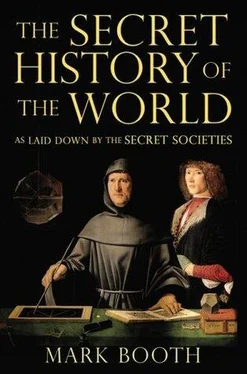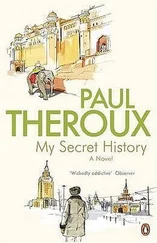The middle of the three arteries ran up from the heart and through the crown of the head. By this route, the way upwards is illumined from below, by means of a radiant heart. And it was by the route of this middle artery, too, that the spirit would depart up through the crown and out of the body at death.
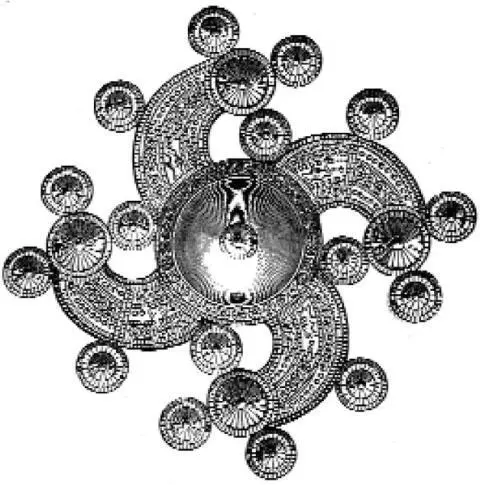
The Neolithic ‘swastika’ carved on a boulder on Keighley moor in Yorkshire, England, is a symbol of the revolving two-petalled lotus and above — the same device — in a Celtic sun brooch found in Sweden. The Rig Veda says, ‘Behold the beautiful splendour of Savitva the Sun-God of the swastika to inspire our visions.’
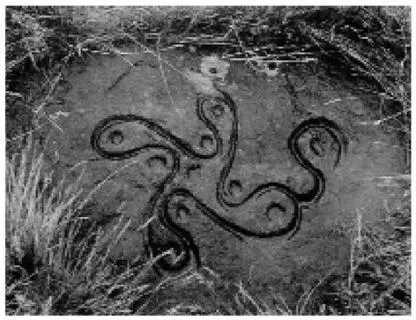
To the ancients all life was involved in a pulse, rhythm or breath. They saw all human lives as breathed temporarily into the world of maya , or illusion, then breathed out again, a process repeated through the ages. They saw great flocks or shoals of souls being breathed in and out of material life together.
This ancient Indian civilization was in some ways an echo of the sun-filled, watery, vegetable world of the period before the sun and earth separated. In some ways it too was a lotus-eating period that would have to end if progress was to take place.
We saw how great beings from the higher hierarchies could no longer appear in physical bodies as they had earlier on Atlantis. They could still appear as semi-material spectres or phantoms, but even this was happening less frequently. By the end of the age people might only see them with their physical eyes once or twice in a lifetime. As the gods withdrew, people would have to find ways to follow them.
In this way yoga was born.
At the height of their meditations a rush of energy from the base of the spine would travel upwards through the middle artery via the heart to the head. Sometimes this energy was thought of as being like a snake, which rose through the spine up into the skull and bit at a point just behind the bridge of the nose. This bite released an ecstatic lace-like flux of luminous currents, seven hundred thousand lightning flares sounding like millions of bees. Adepts would find themselves in another dimension that appeared at first to consist of a mighty ocean of giant weaving waves of light and energy — the preliminary mystical experience in all traditions. As they became more accustomed to the spiritual world, these apparently impersonal forces would begin to resolve themselves into outer garments of the gods, and finally the faces of the gods themselves would emerge from the light, the same faces of the gods of stars and planets that have become familiar to us over the last few chapters.
One of the shortest books in the world, but one of the most powerful, is called the Yoga Sutras of Pantanjali . It was written down in its final form in about 400 BC, but originated in the teachings of the Rishis.
Pantanjali tells the reader to concentrate on the strength of the elephant and by this means attain that strength. He says it is possible to know past lives by concentrating on the past. It would be wishful thinking to believe you or I might be able to perform these feats just like that. These are things that now, as then, only the most advanced, the highest initiates, can attain. The rest of us will only be able to do them in future incarnations.
The Rishis taught that the evolution of the whole cosmos is the goal of existence, and that the seeds of all this transformation lie in the human body.
In 5067 BC these gods were moving the cosmos towards the next stage of human evolution as the sun entered the sign of Gemini. Just as, earlier, the impulse for the evolution of humankind had moved eastwards from drowning Atlantis to India, now it began to move westwards, as it continues to do today.
10. THE WAY OF THE WIZARD
Zarathustra’s Battle Against the Powers of Darkness • The Life and Death of Krishna the Shepherd • The Dawn of the Dark Age
IN 5067 BC IN THE REGION WE NOW call Iran, the birth of a great new leader was foretold. We should picture his mother living in a small agricultural community, like the one unearthed at Çatal Hüyük
It was in the depths of an exceptionally harsh winter when the plague struck. Tongues were wagging in the community, accusing the young woman of witchcraft, claiming the storms, the plague, were her doing.
Then in the fifth month of her pregnancy she had a nightmare. She saw an immense cloud and from it emerged dragons, wolves and snakes that tried to tear her child from her body. But as the monsters approached, the child spoke from inside her womb to comfort her, and as his voice died away, she saw a pyramid of light descending from the sky. Down this pyramid came a boy holding a staff in his left hand and a scroll in his right. His eyes shone with inner fire, and his name was Zarathustra.
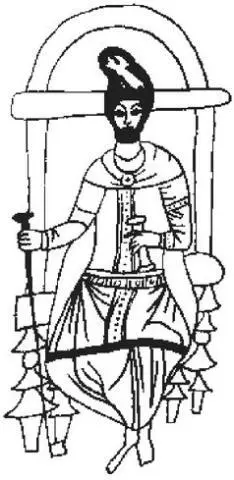
Zarathustra with rolled scroll. The carrying of a rolled scroll in the right hand is always a sign that the subject is an adherent of the secret philosophy. Look around the streets of London, Paris, Rome, Washington DC or any of the great cities of the world, and you may be surprised how many statues of the great and the good carry rolled scrolls.
There are different schools of thought about the dates of Zarathustra. Some writers of the ancient world placed him at approximately 5000 BC, while others, such as Plutarch, at 600 BC. Again, this is because there was more than one Zarathustra.
The birth of the first Zarathustra unleashed storms of hatred. The king was in thrall to a circle of sorcerers who persuaded him the boy must die. He went to the young mother’s house and found the baby alone in his crib. The king was determined to stab the baby, but as he raised his hand, it became mysteriously paralyzed. Later he sent one of his servants to kidnap the child and abandon him in a wolf-ridden wilderness. But the pack of wolves the king hoped would tear the child in pieces saw something in his eyes and ran away terrified. The child grew to be the youth of his mother’s dream.
But the forces of evil knew their greatest enemy had come down to earth. They were just biding their time.
The Age of Gemini was one of division. It was no longer possible to live safely in Paradise, as people had lived in the Indian epoch. If the Indian epoch had been a recapitulation of the heavenly time before the separation of earth and sun, this new, Persian epoch was a recapitulation of the fiery period when the dragons of Lucifer had infected life on earth. Now the forces of evil reasserted themselves, led by Ahriman (the Satan of Zoroastrian tradition). The cosmos was invaded by hoards of demons that darkened the heavens. Demons thrust themselves between humans and the higher echelons of the spiritual hierarchies. If the Indian epoch was the time when the secret physiology of humankind was imprinted on human memory, then this Persian epoch is the time we look to for knowledge of demonology.
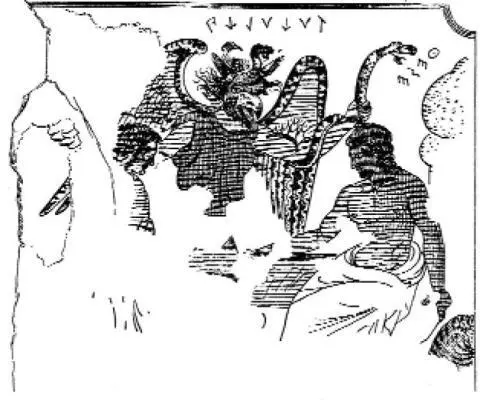
Etruscan depiction of a demon in the form of a Persian Asura. The name Asura literally means not-god, ‘a’ meaning ‘not’ and Sura being the Persian name for a god or angel. Demons in all traditions are often shown gnawing the viscera. This is because of the primordial understanding that consciousness and memory are not stored in the brain alone, but in the whole body. Things we have done that we would rather not confront, painful and undigested experiences, are stored in the viscera.
The hosts of demons against which Zarathustra led his own followers were also classified by him. These form the basis of classifications that the secret societies use today.
Читать дальше
